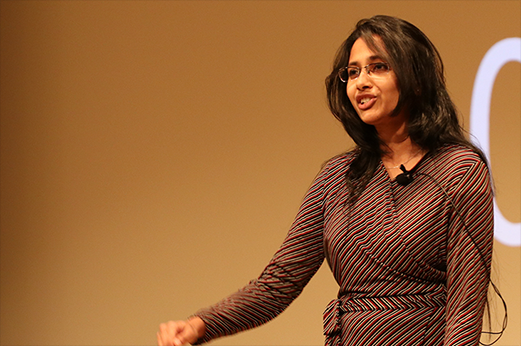The JagStart Showcase is not being held in 2024. Please stay tuned for announcements about the future of JagStart.
Showcase your creativity and ideas with the world
The process
JagStart provides you many opportunities to help you either come up with ideas or to share your current idea. We have partnered with Elevate Ventures (a venture capitalist firm in Indianapolis) to offer workshops on innovating. We'll also offer periodic meet-ups to discuss what you're learning as you perfect your idea for presentation.

Frequently asked questions
JagStart is open to all IU Indianapolis students (e.g., undergraduate or graduate) who are enrolled, full or part time, and are in good standing in any of the IUPUI schools at either the Indianapolis or Columbus campuses. A few other things to keep in mind:
- You don't have to have an idea to participate, but you may.
- JagStart is open to individuals or teams of students.
An elevator pitch is a very short story that describes your idea for a novel product or venture, just as you would do in a real-world scenario (e.g., talking to a potential investor in an elevator). JagStart rewards students who have the best ideas—and the best pitches—with cash prizes.
Students are invited to submit an abstract describing their idea to begin the entry process. This will allow the JagStart mentoring team to provide feedback on your idea and provide mentoring/coaching assistance to the selected teams for preparation of the final entry stage of the contest in the spring. Students may request to be paired with one of our volunteer business mentors (an industry professional that is matched to the team based on the mentor’s expertise and background) to refine their project idea for the next stage of entries.
Please contact Dr. Christian Rogers, faculty fellow with the Institute for Engaged Learning. You can email him at rogerscb@iupui.edu.
Get involved—become a mentor
Are you an innovator or entrepreneur with a desire to give back? We need your help to mentor our IUPUI JagStart students to the finish line. The commitment is low, but the reward is high. Here are the requirements:
- Meet with your students that you are paired with as needed (preferably at least one time).
- Attend one of our workshop sessions (if you can make the first one that would be preferred).
- Participate in a semi-final pitch with students to determine the finalists.
- Provide us a headshot and bio (we’d like to feature you on our website).
Interested?


